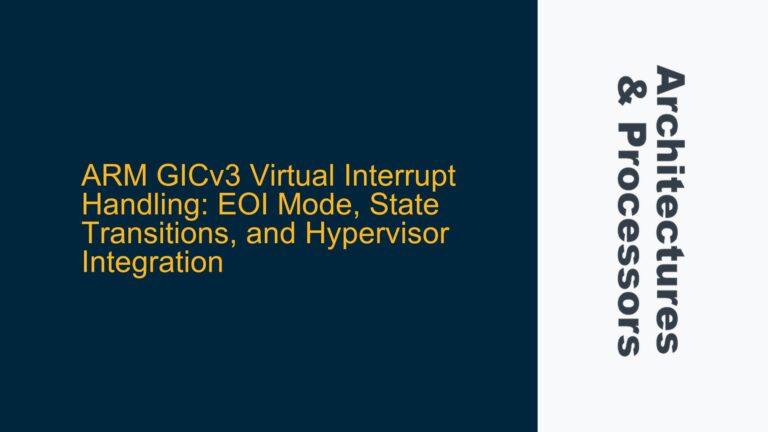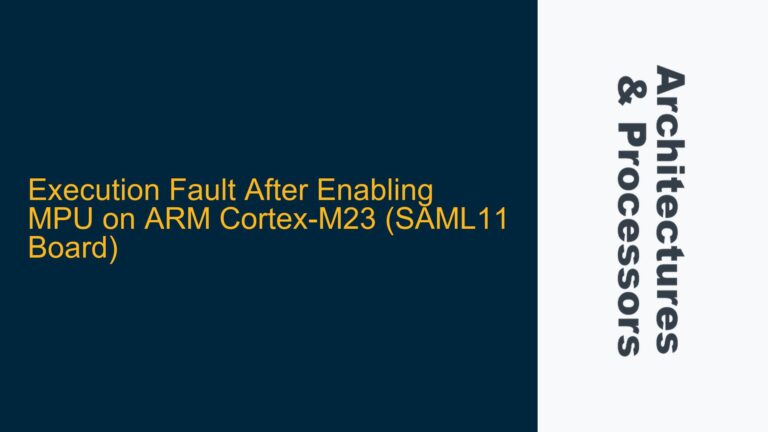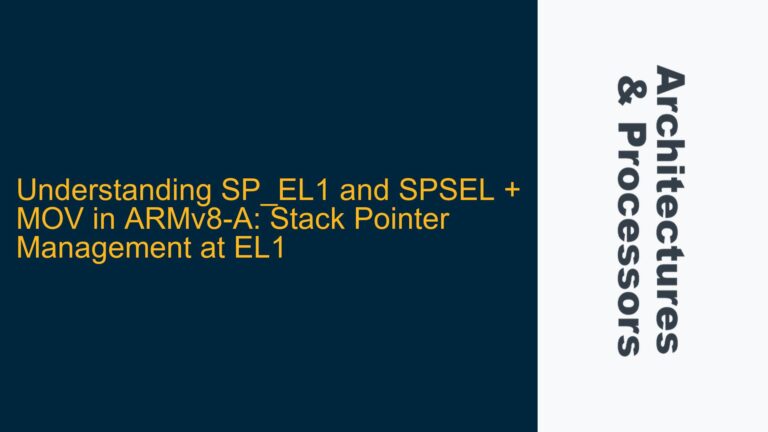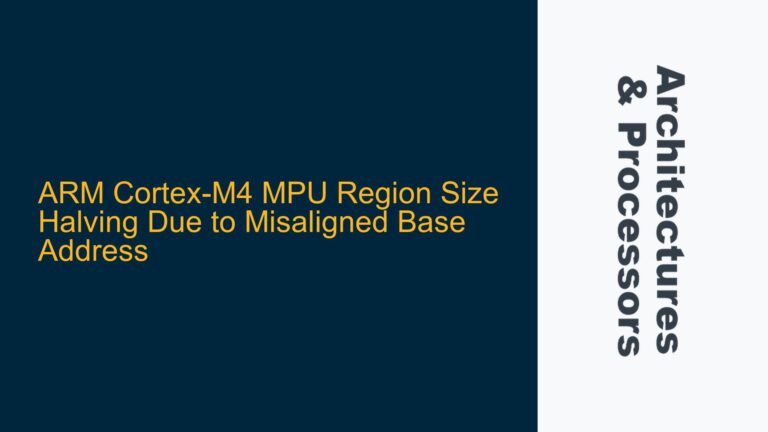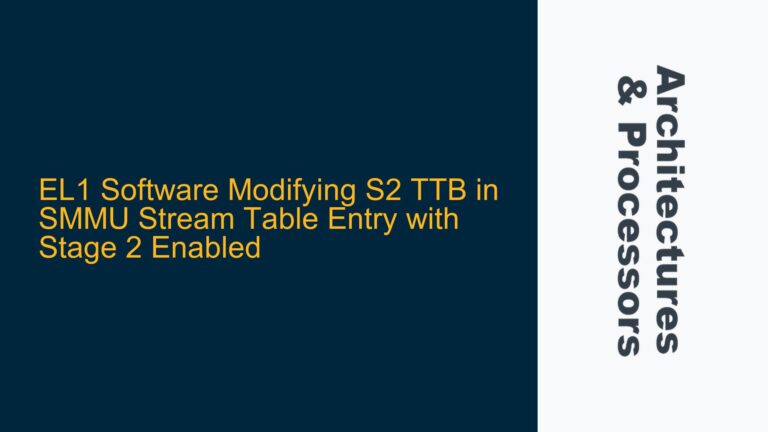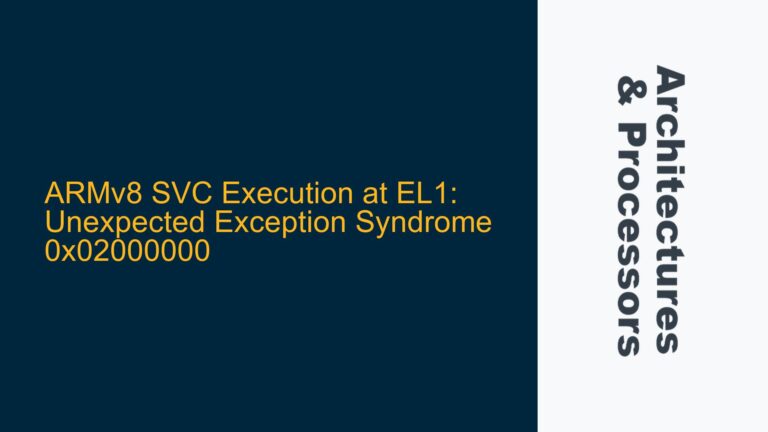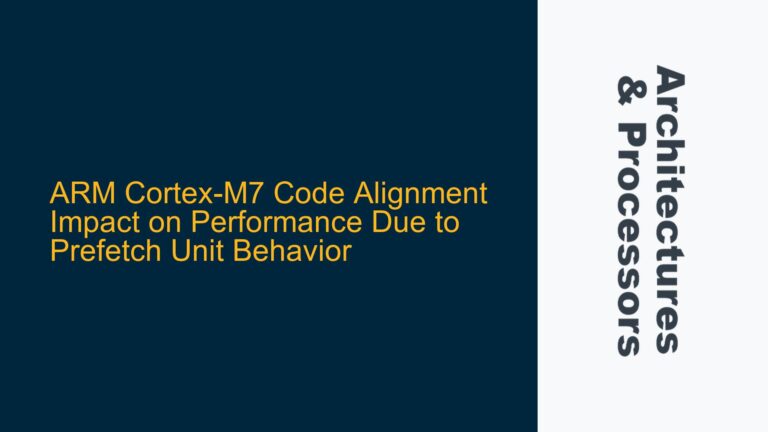ARM GICv3 Virtual Interrupt Handling: EOI Mode, State Transitions, and Hypervisor Integration
Virtual Interrupt Handling in GICv3: EOI Split Mode and Hypervisor Behavior The ARM Generic Interrupt Controller (GIC) version 3 introduces advanced virtualization support, enabling efficient handling of virtual interrupts in hypervisor environments. A key feature of GICv3 is the End-of-Interrupt (EOI) split mode, which separates the priority drop and interrupt deactivation operations. This separation is…
